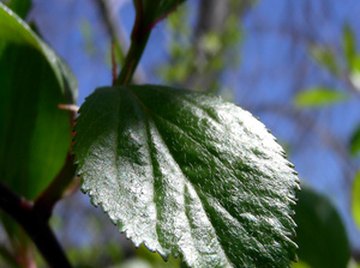
Photosynthesis, the process by which an organism converts light energy and carbon dioxide into carbohydrates and oxygen, occurs in all green plants as well as some fungi and single-celled organisms. The majority of the steps of photosynthesis occur in pigments called chlorophyll. Photosynthesis uses the energy from the sun, as well as carbon dioxide and water from the plant's environment, to produce glucose.
Photosynthesis also produces oxygen as a byproduct. Nearly all atmospheric oxygen is the result of photosynthesis performed by phytoplankton in the ocean. Photosynthesis consists of two main stages: the light dependent reactions of photosynthesis and the light independent reactions.
Origin of the Chloroplast
The chloroplast is the organelle where photosynthesis takes place in all plants. It's believed that in life's early stages, chloroplasts existed as their own entity. They were then engulfed by larger cells and became what we know as an organelle. This is called the endosymbiotic theory.
Read more about the structure and function of chloroplast.
Summarized Steps of Photosynthesis
The steps of photosynthesis can be summarized by the following equation:
6 CO2 (carbon dioxide) + 6 H2O (water) + Energy = C6H12O6 (glucose)+ 6 O2 (oxygen).
The carbon from carbon dioxide combines with hydrogen and oxygen from water to form glucose, with oxygen and water as byproducts. The process involves several intermediate stages and requires various cellular machinery to carry out. This also shows the general order of photosynthesis.
Acquisition of Raw Materials
Carbon dioxide must move from the atmosphere into the chloroplasts of green plants where photosynthesis occurs. Carbon dioxide and water enter single-celled organisms and aquatic plants by simple diffusion. Land plants have specialized structures called stomata that work as tiny valves to allow gasses into and out of the plant.
Water is moved from the soil into land plants via the roots and is transported by vascular tissues. Light is captured primarily by the leaves of plants, whose shape has evolved to capture solar energy with a maximum of efficiency in the distinct environment of each species.
Light Dependent Reactions of Photosynthesis
Next in the order of photosynthesis is the light dependent reactions. During the light dependent reactions of photosynthesis, light energy is converted into chemical energy. Light powers the splitting of water molecules into hydrogen, oxygen, and free electrons.
The free electrons are used to charge energy carrier molecules such as adenosine triphosphate, also called ATP, and nicotinamide adenine dinucleotide phosphate, also called NADP. There are several molecular pathways by which light energy is converted into chemical energy, including cyclic photophosphorylation and non-cyclic photophosphorylation.
Read more about light dependent reactions.
Light Independent Reaction
Next in the order of photosynthesis is the light independent reactions. During these reactions, products of the light reaction are used to form carbohydrates. Carbon dioxide from the atmosphere is captured and bonded with the hydrogen component of water molecules split during the light reaction, and a carbohydrate is formed by a process called the Calvin Cycle. This part of photosynthesis is also known as carbon fixation, an important factor in keeping atmospheric carbon dioxide levels steady.
Glucose Transportation and Storage
Glucose is water soluble and dissolves in the plant's internal fluids. Glucose is moved out of the leaves and distributed to the rest of the plant by diffusion in simple plants and through vascular tissues in more complex plants. Glucose can then be used immediately or stored.
Plants retain some oxygen within their tissues for later use when metabolizing stored glucose by a chemical process similar to animal respiration. Plants must therefore photosynthesize more than they respire. Surplus oxygen is released the same way carbon dioxide is taken in, by simple diffusion or through the plant's stomata.
References
- “Plants and Society”; Estelle Levetin and Karen McMahon; 1996
- Encyclopedia: “Photosynthesis”
Photo Credits
spring leaf image by John Sfondilias from Fotolia.com
